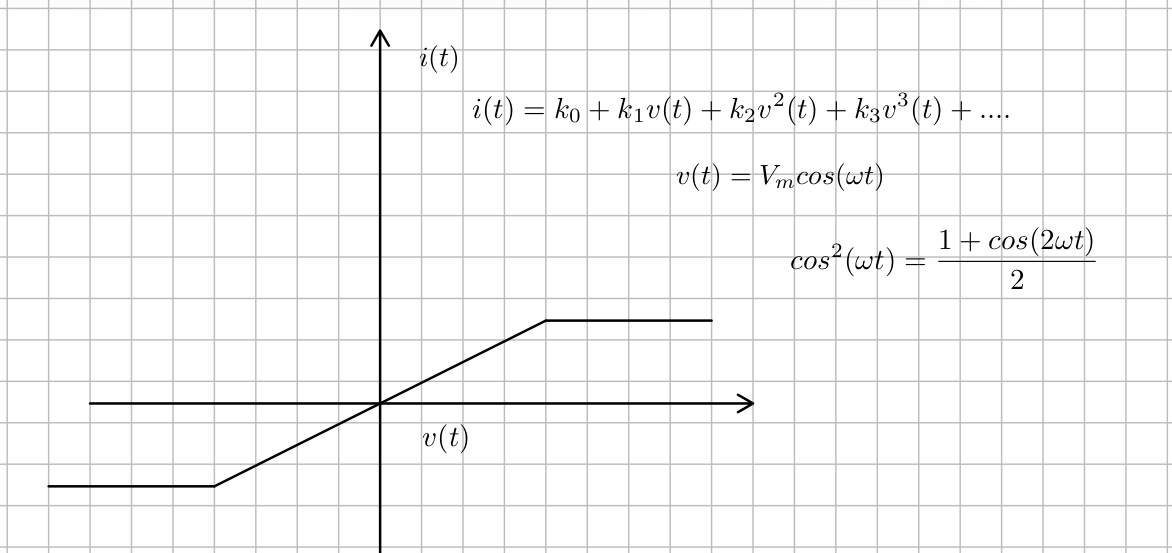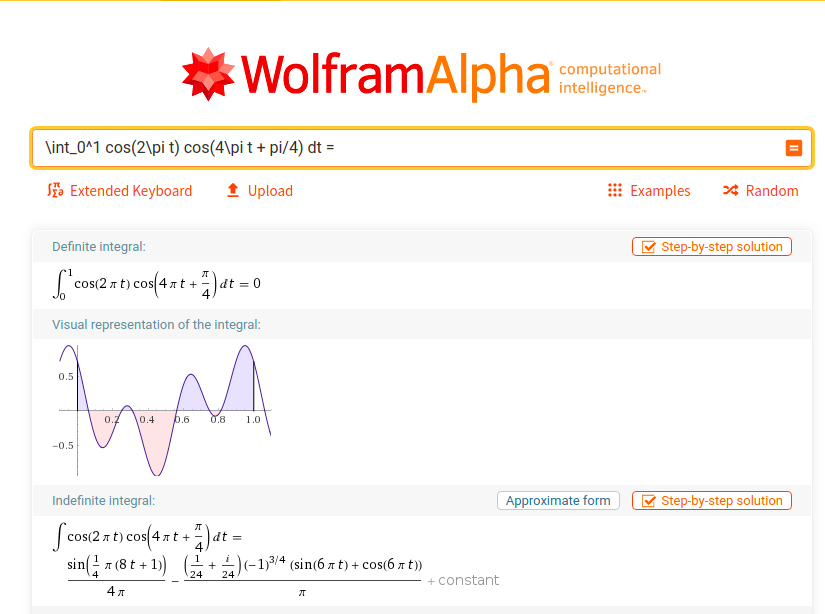Average Power, Apparent Power, and Power Factor for Sinusoidal Excitation¶
Ig $v(t) = V_m cos(\omega t)$, then then because we have a non-linear impedance, $i(t) = \sum c_n cos(n \omega t + \phi_n)$. The cause of harmonics can be seen if we take a simple I-V curve that has clipping for the current. You can write the current as a power series (using Taylor's work), and from that you can see how it is the same as a Fourier series with harmonics caused by the clipping. The resulting waveform is periodic, but now has frequency components at $n\omega$.  ").
").
In the linear load situation, $\bar V = V_m$ and $\bar I = V_m/(|Z|e^{j\theta})$ where $\theta$ is the angle of the impedance. Remember that the root mean square concept allowed you to say $$P=V_{rms} I_{rms} cos(\theta) =1/2V_m V_m/|Z| cos(-\theta) = Re[\mathbf S]$$ From Circuits you remember with the linear load, you have:
The complex power was $\mathbf S$. The magnitude of the complex power is the apparanent power,$S$.
$$|\mathbf S|=S=1/2V_m I_m = V_{rms} I_{rms}$$
$$P=1/2V_m I_m cos(\theta)=V_{rms} I_{rms} cos(\theta)$$
$$p.f. = cos(\theta) =1/2V_mI_m/S = P/S$$
For the non-linear load, we use the definition for the power factor: $$ p.f. = P/S$$
where $P$ is the power in the fundamental. Note that average power in other frequencies is zero. The voltage of the fundamental multiplied by the current of a harmonic aerages to zero, because $$\int_T cos(2\pi t/T) cos(2\pi n t/T + \phi_n) dt = 0$$
For example, ask Wolfram alpha, and get this:  Thus the power in the harmonics is reactive power.
Thus the power in the harmonics is reactive power.
It is reflected back and forth between the source and load, and reduces the power factor. There is a more complete write up, see this.